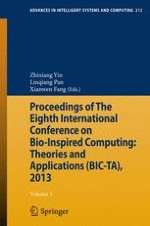2013 | OriginalPaper | Chapter
Algorithmic Tile Self-Assembly for Solving the Maximal Matching Problem
Authors : Zhen Cheng, Yufang Huang, Jianhua Xiao
Published in: Proceedings of The Eighth International Conference on Bio-Inspired Computing: Theories and Applications (BIC-TA), 2013
Publisher: Springer Berlin Heidelberg
Activate our intelligent search to find suitable subject content or patents.
Select sections of text to find matching patents with Artificial Intelligence. powered by
Select sections of text to find additional relevant content using AI-assisted search. powered by
